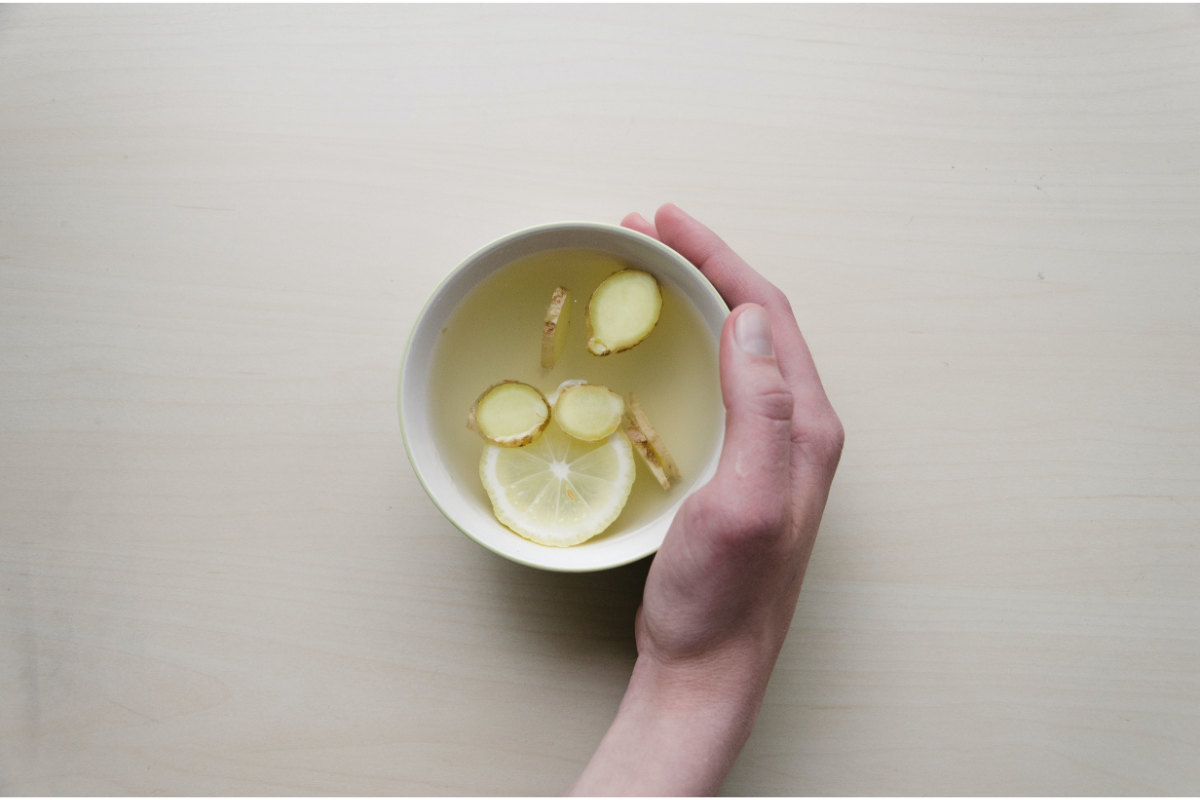Colds and flu are common illnesses that can cause unpleasant symptoms such as nasal congestion, cough and fever. Although conventional medicines can offer temporary relief, more and more people are turning to natural remedies to treat these conditions effectively and without unwanted side effects.
In this article, we’ll explore seven popular natural remedies for colds and flu. These remedies include echinacea root decoction, cinnamon infusion, ginger root tea, garlic syrup, blueberry tea, chilli paste and sage gargle. Each remedy will be examined in detail, including its benefits, method of preparation and precautions for use. By incorporating these natural remedies into your healthcare routine, you can boost your immune system and speed up your recovery.
1- Echinacea root decoction
Echinacea root decoction is renowned for its ability to reduce the severity and duration of cold symptoms, such as congestion, runny nose, sore throat, headache, weakness and chills. Amerindians have used this medicinal plant for centuries to treat respiratory tract infections, and it is also renowned for its preventive properties against flu.
To make this decoction, you’ll need 20g of dried Echinacea root and 3 cups of cold water. Start by placing the echinacea roots in a saucepan, then cover with water and bring to the boil. Simmer for 20 to 30 minutes, until the liquid has reduced by about a third. Then strain the liquid through a sieve to remove the roots, and store the decoction in an airtight container. We recommend gargling three times a day with three tablespoons of this decoction, either hot or cold. Be sure to store the decoction in a cool place and use it within three days of preparation to ensure optimum effectiveness.
2- Cinnamon infusion
Cinnamon infusion is renowned for its antiviral and antiseptic properties, as well as its ability to decongest the respiratory tract. This spice is also known to stimulate blood circulation and help combat cold spells.
How to prepare cinnamon infusion?
To prepare this infusion, you’ll need a level teaspoon of powdered cinnamon and honey to taste. Start by pouring boiling water into a cup containing the powdered cinnamon. Leave to infuse for about 5 minutes, then strain the mixture through a fine sieve to remove any cinnamon residue. Add honey to sweeten to taste. We recommend drinking a second cup of infusion within two hours to maximise its beneficial effects.
This cinnamon infusion offers a natural and effective alternative for relieving cold symptoms while promoting better blood circulation and boosting the immune system. Incorporating this drink into your daily routine can contribute to a faster recovery and better overall health.
What are the benefits of cinnamon for colds and flu?
In addition to its antiviral and antiseptic qualities, cinnamon offers a wide range of health benefits, including:
1. Stimulates digestion :
Cinnamon is known for its carminative properties, which help relieve digestive problems such as bloating and gas. By promoting healthy digestion, it can also help reduce the nausea associated with colds.
2. Reduces inflammation:
Studies have shown that cinnamon has anti-inflammatory properties, making it a valuable ally in the fight against inflammation associated with viral infections such as the common cold. By reducing inflammation, it can help relieve symptoms such as sore throats and joint pain.
3- Ginger root tea
Native to Asia, ginger was once considered a magical, aphrodisiac plant. Its unique, spicy flavour is largely due to the presence of gingerol and shogaol. Used as a spice in Chinese, Indian, Japanese and Hungarian cuisine, it is used to cure many ailments: nausea, digestive problems, headaches, toothache and colds. Containing antiviral substances, it combats sore throats, inflamed mucous membranes and coughs. There are several ways to use ginger to combat a bad cold. The simplest method is to consume ginger as an herbal tea.
For this herbal tea: 120 g fresh ginger root, 2 cups water, zest and juice of 1 lemon, 1 pinch cayenne pepper Cut the ginger into thin strips – without peeling it – and put it in a saucepan with the water, lemon zest and cayenne pepper. Bring to the boil, cover and simmer for 20 minutes. Remove from the heat and add the lemon juice. Drink a cup as soon as you feel the need. This tea can be kept for 2 to 3 days. The vapours will clear your nose and, once you’re out of the water, you’ll be able to sweat to get rid of the toxins.
4- Garlic syrup
Surprising as it may seem, garlic is also an effective remedy for colds and flu symptoms, as it treats respiratory tract infections.
How do I make a garlic syrup to treat the flu?
To make this syrup, you’ll need a head of garlic, 250 ml of water, the juice of half a lemon and 2 tablespoons of honey. Start by crushing the garlic cloves and placing them in a saucepan with the water, then bring to the boil. Simmer for around 10 minutes. Then add the lemon juice and honey and simmer for a further 2-3 minutes.
Once the syrup is ready, leave to cool and filter the liquid before pouring into an opaque glass bottle. It is recommended that you take 2 to 3 tablespoons of syrup a day to benefit from its effects. Store the syrup in the fridge, where it will keep for 2 to 3 weeks.
By incorporating this garlic syrup into your daily routine, you can boost your immune system and help relieve cold and flu symptoms naturally and effectively.
What are the benefits of garlic for colds and flu?
As well as its antimicrobial and antiviral action, garlic offers a number of other benefits for relieving cold and flu symptoms:
1. Boosts the immune system :
Garlic is rich in sulphur compounds such as allicin, which have been shown to boost the immune system by stimulating the production of white blood cells. By eating garlic regularly, you can help your body fight viral infections more effectively.
2. Relieves congestion:
Garlic’s expectorant properties help clear airways by thinning mucus, which can relieve nasal and chest congestion associated with colds or flu. By incorporating garlic into your diet or using garlic-based remedies, you can breathe easier and feel less congested.
5-Blueberry tea
Blueberry tea is a drink renowned for its health benefits, particularly its ability to reduce the risk of contracting the flu thanks to the presence of quercetin, a compound with antiviral properties.
How do I make blueberry tea at home?
To make this herbal tea, you’ll need 2 tablespoons of chopped blueberry leaves and a cup of freshly boiled water, plus honey for sweetening to taste. Start by pouring the boiling water over the blueberry leaves and leave to infuse for about 5 minutes. Then strain the mixture to remove the leaves and add honey to sweeten the tea to taste.
We recommend drinking a cup of this herbal tea every 4 hours to benefit from its beneficial effects on preventing flu and boosting the immune system. By making this drink part of your daily routine, you can help protect your body against viral infections and maintain good health all year round.
The benefits of blueberry tea
In addition to its ability to reduce the risk of contracting influenza thanks to quercetin, blueberry tea offers other health benefits:
1. Antioxidant action:
Blueberries are rich in antioxidants such as flavonoids, which help neutralise free radicals in the body and reduce oxidative stress. By regularly drinking blueberry tea, you can protect your cells from free radical damage and promote overall health.
2. Boost your immune system:
In addition to its ability to prevent viral infections, blueberry tea can also boost the immune system thanks to its content of essential vitamins and minerals. By drinking this tea regularly, you can help your body defend itself better against infection and stay healthy.
6- Chilli paste
Chilli paste is renowned for its capsaicin content, an active compound that gives chillies their spicy character and offers numerous health benefits. In particular, capsaicin is excellent for treating flu and colds, and helps prevent cardiovascular disease. It also helps to drain mucus, making it an effective remedy for treating ‘runny noses’ and clearing the respiratory tract.
How to make a chilli paste to treat yourself?
To make this chilli paste, you’ll need 3 small dried chillies, 2 cloves of garlic, 1 small onion, 2 tablespoons of honey, 3 tablespoons of lemon juice, 3 tablespoons of water and 1/2 teaspoon of salt. Start by placing all the ingredients in a food processor and blending until finely chopped. Then pour the mixture into a small saucepan and cook over a low heat for 10 minutes, stirring occasionally. This will give you 100 ml of chilli paste.
Add this paste to your dishes to benefit from its beneficial effects on respiratory health. By clearing the sinuses and freeing the lungs, chilli paste can help you feel better when you have a cold or flu symptoms. Incorporating this spicy natural remedy into your diet can contribute to your overall well-being and recovery.
What are the benefits of chilli paste?
In addition to its ability to cure flu, colds and help prevent cardiovascular disease, chilli paste offers other health benefits:
1. Pain relief :
The capsaicin present in chillies acts as a natural analgesic by blocking the pain signals sent by the nerves. By applying chilli paste to the skin, you can relieve pain caused by conditions such as arthritis, headaches and muscle aches.
2. Improved digestion:
Capsaicin stimulates the production of gastric juices in the stomach, which can promote better digestion and relieve symptoms such as bloating, flatulence and heartburn. By incorporating chilli paste into your meals, you can help maintain a healthy digestive system and prevent gastrointestinal disorders.
7- Gargle with sage
Garden sage is reputed to be a real panacea. Rich in essential oil and tannins, this plant is a precious ally in the event of colds, flu or a sore throat.
How do I make a sage gargle?
For this gargle: 1 large handful of sage leaves, 1 small handful of thyme leaves, 2 cups of boiling water, 2 tbsp. cider vinegar, 2 tsp. honey, 1 tsp. cayenne pepper Coarsely chop the leaves and place in a jar. Add the boiling water, cover and leave to stand for 30 minutes. Remove the leaves and add the vinegar, honey and cayenne pepper. Gargle with this mixture at the first sign of symptoms, or drink 2 teaspoons two or three times a day. Keep for a week.
Warning:
Sage infusions should not be taken in excess. This plant is contraindicated during pregnancy and breast-feeding, as well as for people suffering from epilepsy, high blood pressure and breast cancer. For more information, please consult your doctor.





